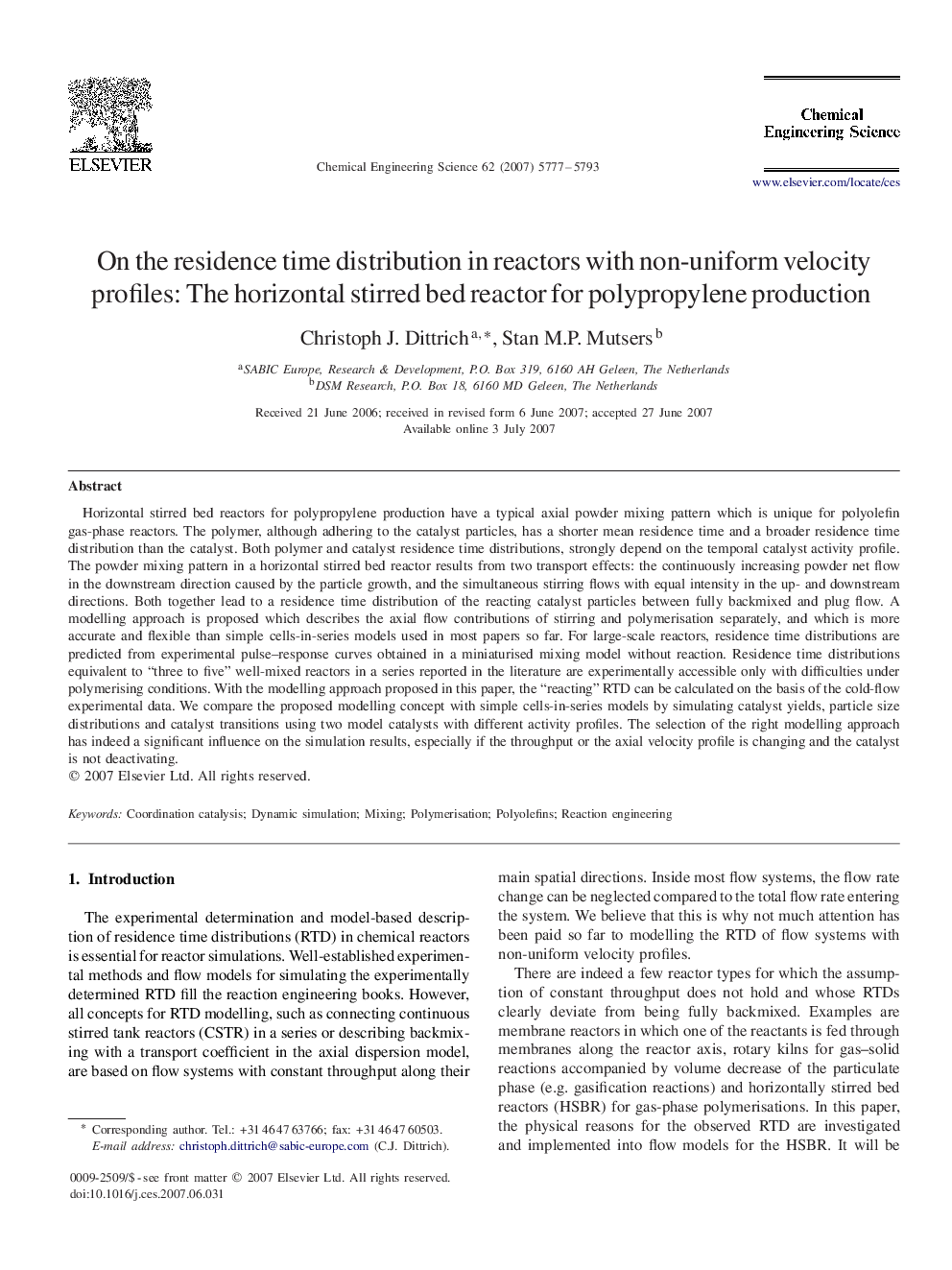| کد مقاله | کد نشریه | سال انتشار | مقاله انگلیسی | نسخه تمام متن |
|---|---|---|---|---|
| 159723 | 457045 | 2007 | 17 صفحه PDF | دانلود رایگان |

Horizontal stirred bed reactors for polypropylene production have a typical axial powder mixing pattern which is unique for polyolefin gas-phase reactors. The polymer, although adhering to the catalyst particles, has a shorter mean residence time and a broader residence time distribution than the catalyst. Both polymer and catalyst residence time distributions, strongly depend on the temporal catalyst activity profile. The powder mixing pattern in a horizontal stirred bed reactor results from two transport effects: the continuously increasing powder net flow in the downstream direction caused by the particle growth, and the simultaneous stirring flows with equal intensity in the up- and downstream directions. Both together lead to a residence time distribution of the reacting catalyst particles between fully backmixed and plug flow. A modelling approach is proposed which describes the axial flow contributions of stirring and polymerisation separately, and which is more accurate and flexible than simple cells-in-series models used in most papers so far. For large-scale reactors, residence time distributions are predicted from experimental pulse–response curves obtained in a miniaturised mixing model without reaction. Residence time distributions equivalent to “three to five” well-mixed reactors in a series reported in the literature are experimentally accessible only with difficulties under polymerising conditions. With the modelling approach proposed in this paper, the “reacting” RTD can be calculated on the basis of the cold-flow experimental data. We compare the proposed modelling concept with simple cells-in-series models by simulating catalyst yields, particle size distributions and catalyst transitions using two model catalysts with different activity profiles. The selection of the right modelling approach has indeed a significant influence on the simulation results, especially if the throughput or the axial velocity profile is changing and the catalyst is not deactivating.
Journal: Chemical Engineering Science - Volume 62, Issue 21, November 2007, Pages 5777–5793